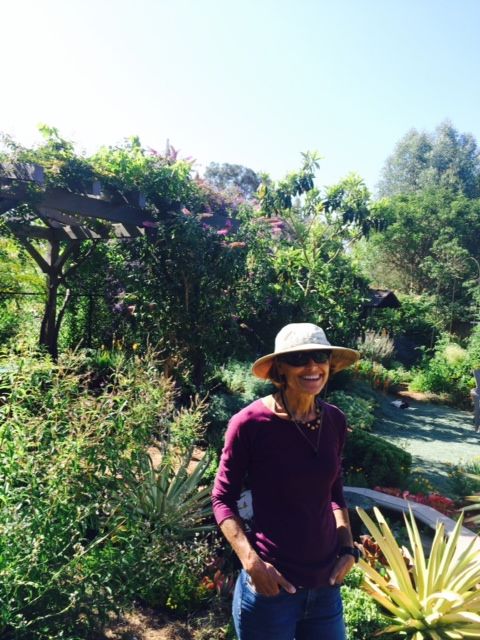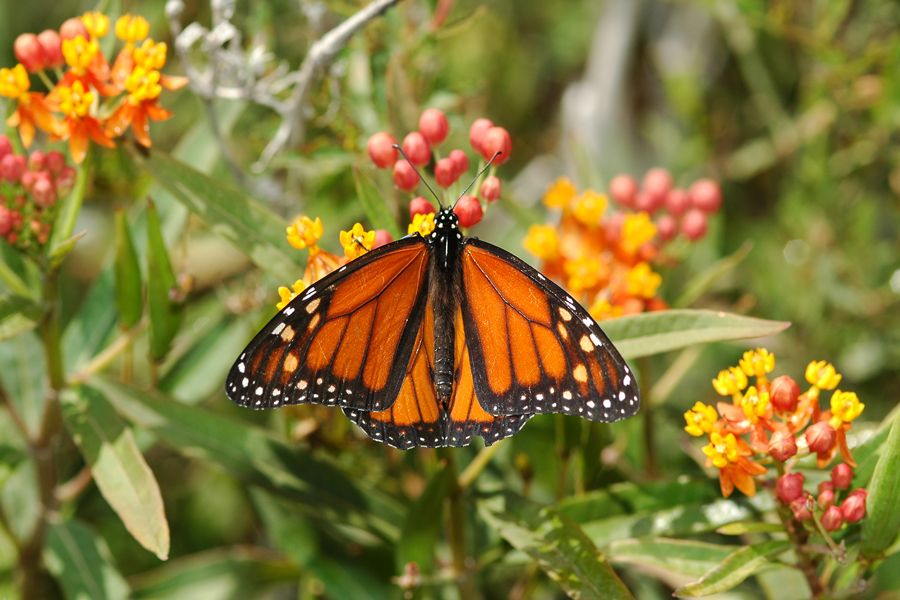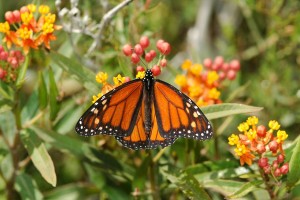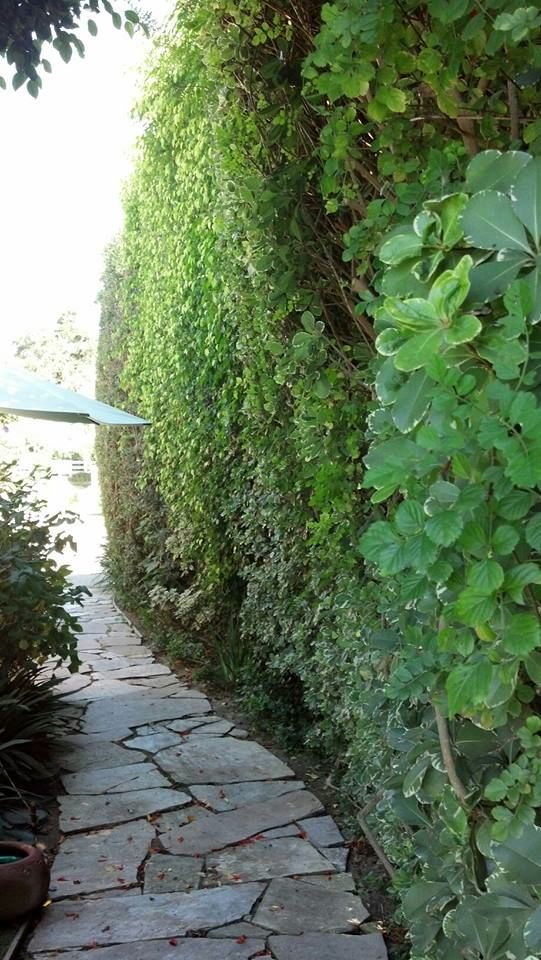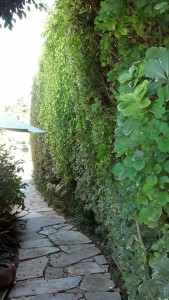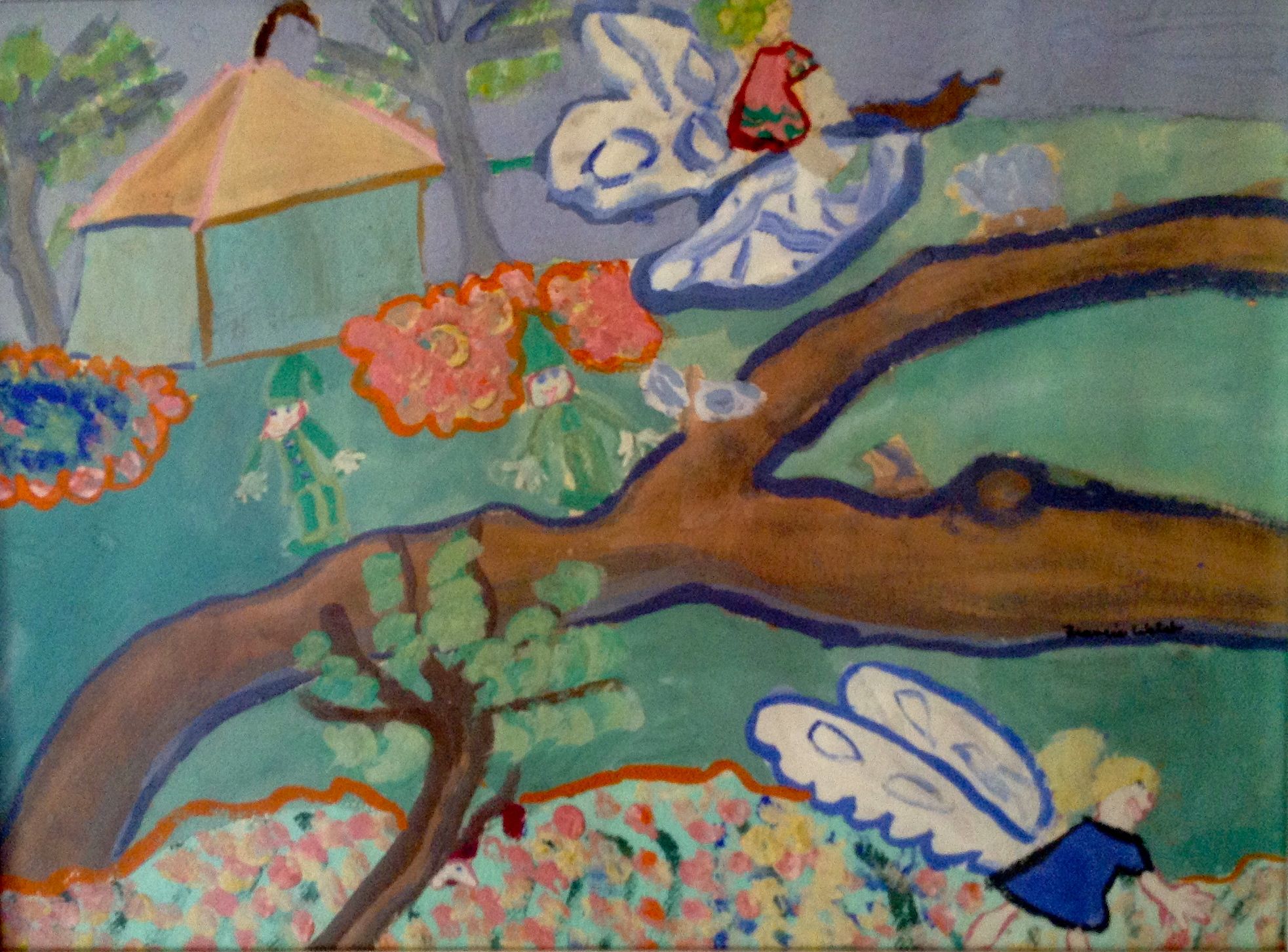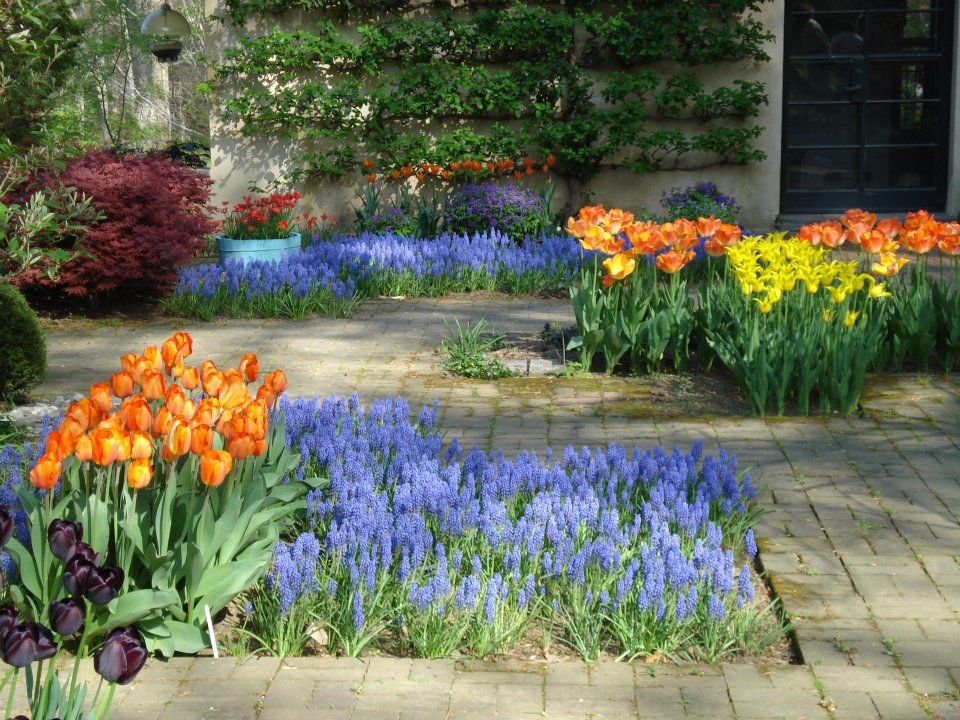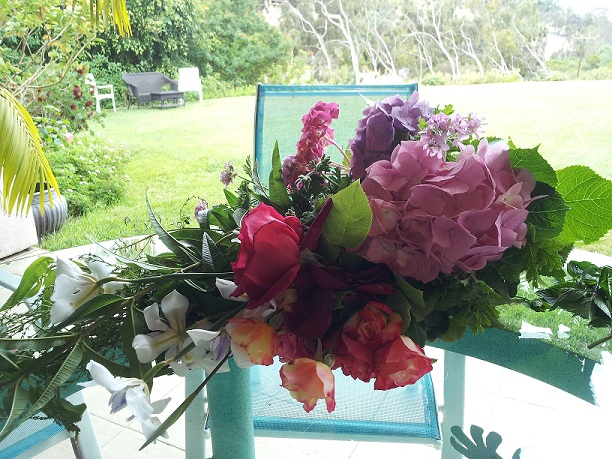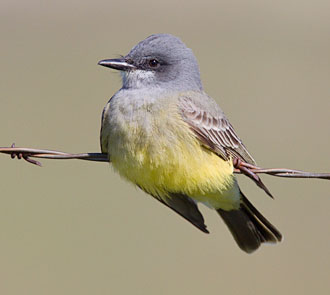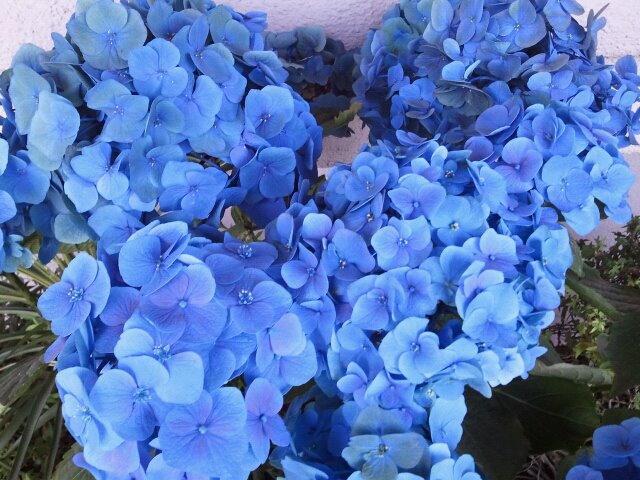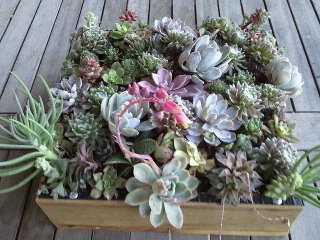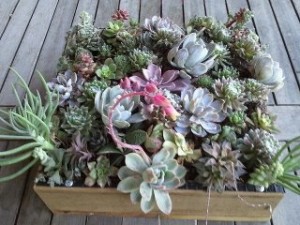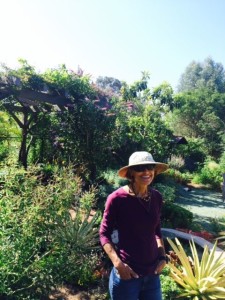
Last week was the end of the year party for Olivenhain Garden Club. We were blessed to have our party in Jan Casado’s garden. Once in her garden one felt like one never wanted to leave. A few of us ate lunch at a table under a pergola looking out at the view– it felt like Shangra-La.
Jan has her degree in horticulture from Cal Poly Pomona. She was originally an art major but switched to horticulture. This is evident from Jan’s garden. Jan is also a Garden Designer.

I am not a perfectionist. My credo is from the Amish, Perfection is for God. If I had become an artist I would have been a realist.
Jan’s paintings are her gardens. The garden is her palette. Birds and butterflies fluttered by in profusion as my companions and I sat transfixed in her Shangra-La. Jan grows the Asclepius, commonly called milkweed. This is the host plant for the monarch butterfly. Butterfly blog
At one point a male hooded oriole stopped to take a drink from the birdbath, spotted us and quickly flew away before I could snap a photo. When I asked Jan her favorite garden to design, her response was “English wild garden.”
When you first climb the steps to Jan’s little piece of paradise you are greeted by a carpet of Dymondia margaretae. Dymondia is slow to grow but when established is softer and more inviting than grass, not to mention drought-tolerant. Jan enjoys walking barefoot on it and occasionally practices yoga on the Dymondia. Jan has three Duranta erecta about 12-14 feet tall painting a purple backdrop to the garden.

Birdbath in Background is Where Oriole Landed
When I started designing my garden, my idea was to have it all blues and purples. As the garden progressed I added complementary colors. I am very proud of my Kniphofia uvaria (Red-Hot Pokers).
Why do you love to garden Jan, what does the garden give you?
Jan responded in a thoughtful manner,
Gardening gives me peace and tranquility, serenity and beauty. I garden two or three hours a day. I very seldom sit in my garden.

Jan is also a beekeeper by happenstance. One day bees planted a hive in her garden so Jan read up on being a beekeeper and now has three hives. Jan is a true renaissance “pioneer” woman. Jan made the rebar structures for her tomato plants, twelve feet tall. She remembers gardening as a very young child with her father. She learned how to use the chipper at the young age of eight. She is a truly hands-on gardener and does everything that a garden needs. Jan also composts in the bin method; very large trash cans that she moves the compost from bin to bin until it is done.
Jan has also brought some beautifully shaped agate rocks from her property in the Sierra Nevada.
I’m really a mountain girl at heart. I am most at home in the mountains and we are building a home on our property and will eventually live there full time.
Jan is an amazing cook. She makes everything from scratch, even making all the food for their many back-packing trips in the Sierras. Jan is a Pescetarian (a vegetarian who eats fish) and she eats very little dairy. What follows is Jan’s amazing recipe for sweet potato tacos.
Because this is a staple in our diet, I cook four pounds of pink beans at a time.
Prepare the beans.
Soak 4 pounds pink beans in a large canning pot with plenty of water because the beans will expand. Add 3 tablespoons baking soda (helps with flatulance). Change the water twice in an eight-hour period.
One time I left the beans too long and they molded and I had to throw the whole thing out. You can tell by the smell.
Thoroughly rinse beans at the end of the day and put in refrigerator overnight.
In the morning, put back in a large pot with plenty of water
Add three potatoes Jan likes Yukon with their skins on
8 carrots
28 ounces canned tomatoes Jan uses her own from the garden
Add lots of salt, 3 or 4 T
4 T dark chili powder Sprouts Market
1 heaping t celery seed
1 t curry
Pepper about 1/2 t
Sauté one onion and ten or twelve cloves of garlic. Cook four hours or longer. The longer one cooks the bean, the less flatulence. Once cool freeze in zip lock freezer bags, quart size.
Ancho Chilies (from Sprouts Market)
Cook ten at a time, remove the skins – Jan cooks hers over a gas stove, but it can be done in the oven. Put them in a ceramic bowl with a plate on top for twenty minutes or longer and then skins peel easily. Jan also freezes these to take out when needed.
Prepare your sweet potatoes (1/2 sweet potato per person) Peel and cube, steam until done.
How to Assemble Jan’s Incredible Sweet Potato Tacos:
If any ingredients are frozen take out ahead of time to defrost at room temperature.
Wet tortilla, (Sprouted Corn— Food For Life, available at Sprouts Market) spray small amount of non-stick canola oil on both sides and then put tortilla in frying pan about ½ minute each side.
Layer the taco in this order
Beans
Ancho Chilis
Sweet Potato
Jack and Cheddar cheese
Homemade salsa (Jan’s homemade salsa recipe below)
Put filled tacos in a casserole dish and keep warm until ready to serve, about 200 degrees. Serve with homemade guacamole, lettuce and homemade salsa.
She makes her homemade salsa in a Vitamix blender. If you don’t have a Vitamix, hand chop or chop in your Cuisinart.
½ red onion
½ red bell pepper
1/2 to 1 1/2 jalapeno
½ bunch cilantro
1 T lemon juice
6 small tomatoes or three large
heaping T dark chili powder (more is better) Sprouts Market
4 or 5 cloves of garlic
heaping t salt
1/2 t pepper
3/4 T celery seed
Dash of curry
If using Vitamix , mix on level 2 for 30 seconds, level 5 for ten seconds.
In conclusion Jan is a Pioneer Woman who has created a true Shangra-La for her family and friends! Jan’s Realism Art is evident in Jan’s gardens, her own and those she designs for others. I, and I venture to say everyone, was deeply inspired in Jan’s garden. I for one was inspired to go pick up my paint brush and pen to write!
Happy Summer and making art in whatever form that takes you!
Bye for now,
Francesca

